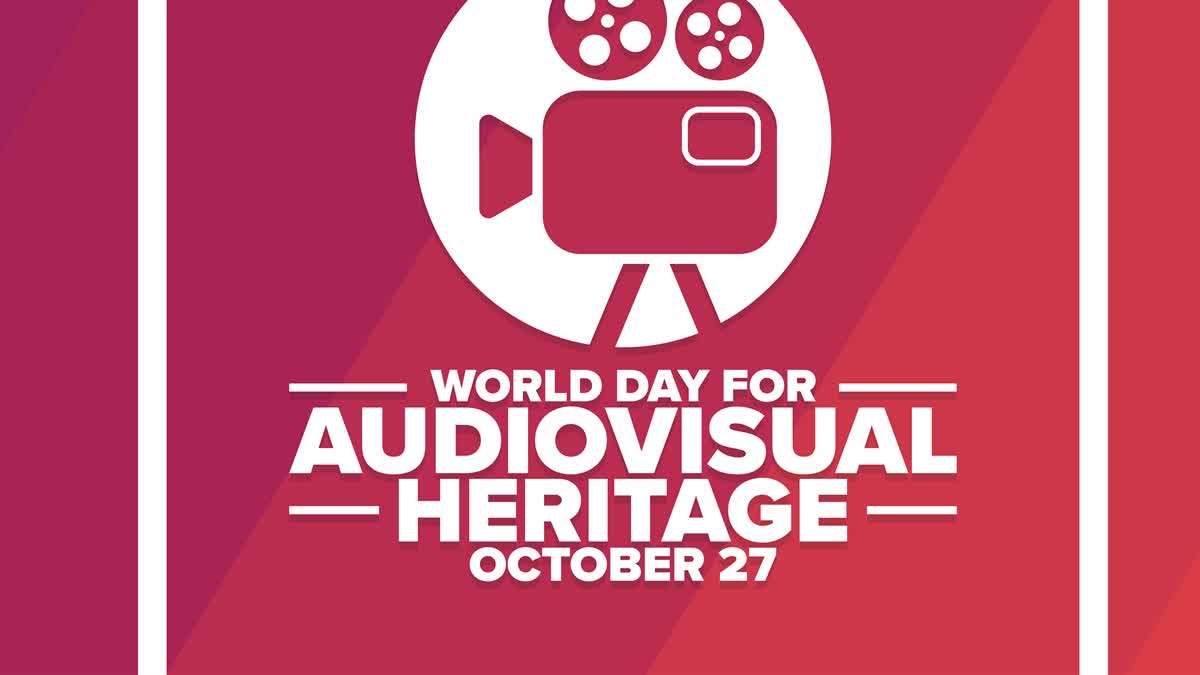Hyderabad: UNESCO has declared October 27 as the World Day for AV Heritage to raise awareness of the significance of AV documents and to draw attention to the need to safeguard them. Every year, activities are organized by different institutions worldwide around a theme to drum up interest in the event. Audiovisual archives tell us stories about people’s lives and cultures from all over the world. They represent a priceless heritage which is an affirmation of our collective memory and a valuable source of knowledge since they reflect the cultural, social and linguistic diversity of our communities. They help us grow and comprehend the world we all share. Conserving this heritage and ensuring it remains accessible to the public and future generations is a vital goal for all memory institutions as well as the public at large.
What is Audiovisual Heritage?
Preserving this heritage and making it accessible to the public and future generations is a paramount objective for memory institutions and society as a whole. To further this goal, the UNESCO Archives has initiated the project “Digitizing our shared UNESCO history”. This project is dedicated to preserving and sharing historical records and audiovisual materials related to UNESCO’s mission and activities, thus ensuring that this vital part of our global heritage remains available and meaningful to all.
Moreover, World Day provides an opportunity for UNESCO’s Member States to assess their efforts in implementing the 2015 Recommendation Concerning the Preservation of, and Access to, Documentary Heritage, Including in Digital Form. This annual event is a reminder of the importance of preserving and accessing audiovisual documents for future generations and ensuring the safeguarding of our cultural heritage.
Background
Many sound recordings, moving images and other audiovisual material are lost because of neglect, natural decay and technological obsolescence. Organizations such as UNESCO felt that more audiovisual documents would be lost if stronger and concerted international action was not taken. A proposal to commemorate a World Day for Audiovisual Heritage was approved at a UNESCO general conference in 2005. The first World Day for Audiovisual Heritage was held on October 27, 2007.
The World Day for Audiovisual Heritage aims to raise general awareness of the need for urgent measures to be taken. It also focuses on acknowledging the importance of audiovisual documents as an integral part of national identity.
History of World Day for Audiovisual Heritage
The World Day for Audiovisual Heritage (WDAH) is a commemoration of the adoption, in 1980 by the 21st General Conference, of the Recommendation for the Safeguarding and Preservation of Moving Images. The World Day provides an occasion to raise general awareness of the need to take urgent measures and to acknowledge the importance of audiovisual documents. But it was the 33rd session of UNESCO’s General Conference in which 33C/Resolution 53 was adopted to proclaim 27 October as World Day for Audiovisual Heritage.
The World Day for Audiovisual Heritage commemorates the UNESCO Recommendation on the Safeguarding of Moving Images adopted on 27 October 1980 in Belgrade. The very first film added to the UNESCO Memory of The World Register in 2001 was the science fiction film Metropolis (Germany 1927). In 2005, the first documentary films were inscribed in the Memory of the World Programme, among these were the films of the brothers Lumière (France) and the Audiovisual documents of the International antinuclear movement “Nevada-Semipalatinsk” (Kazakhstan).
